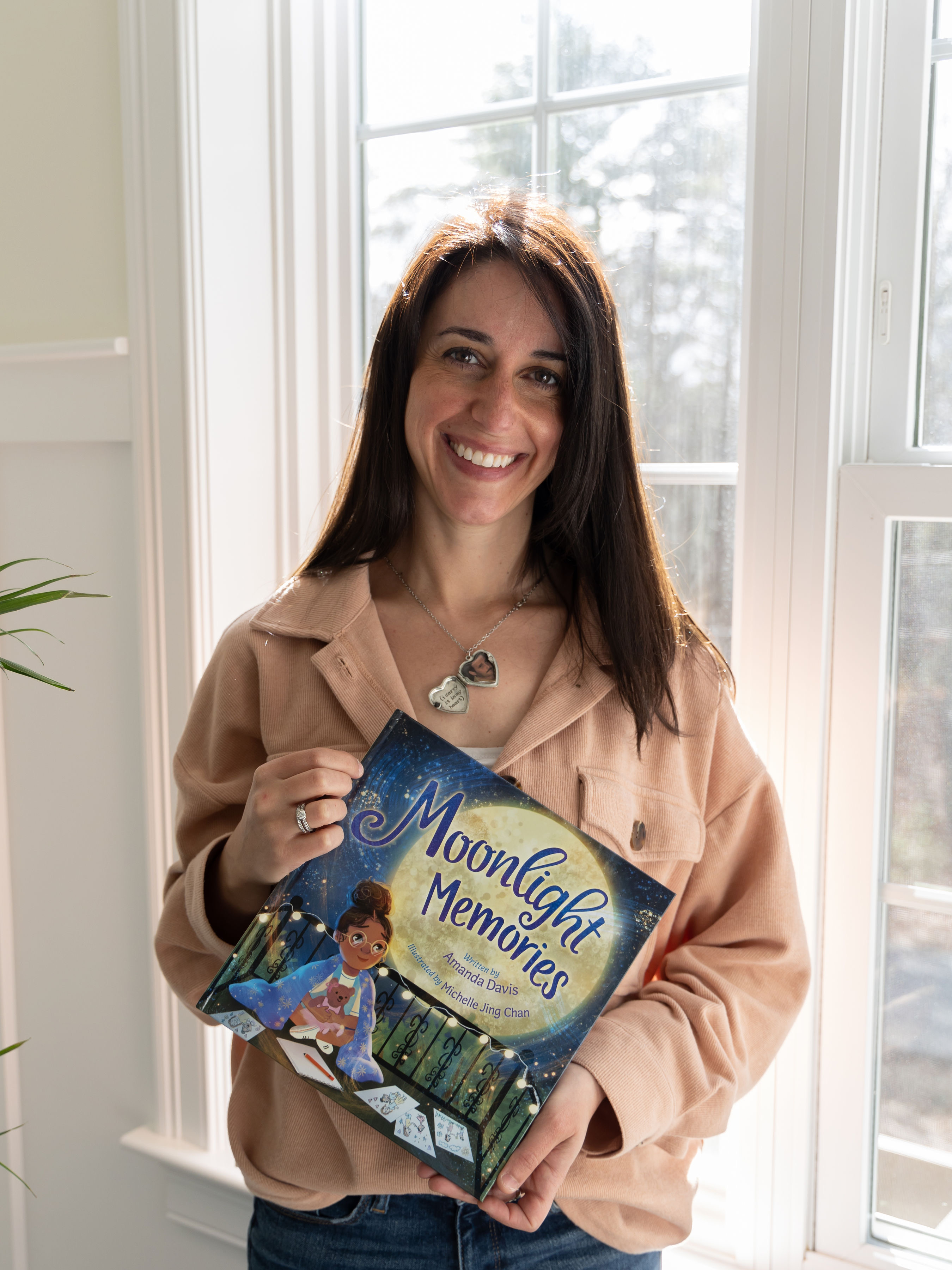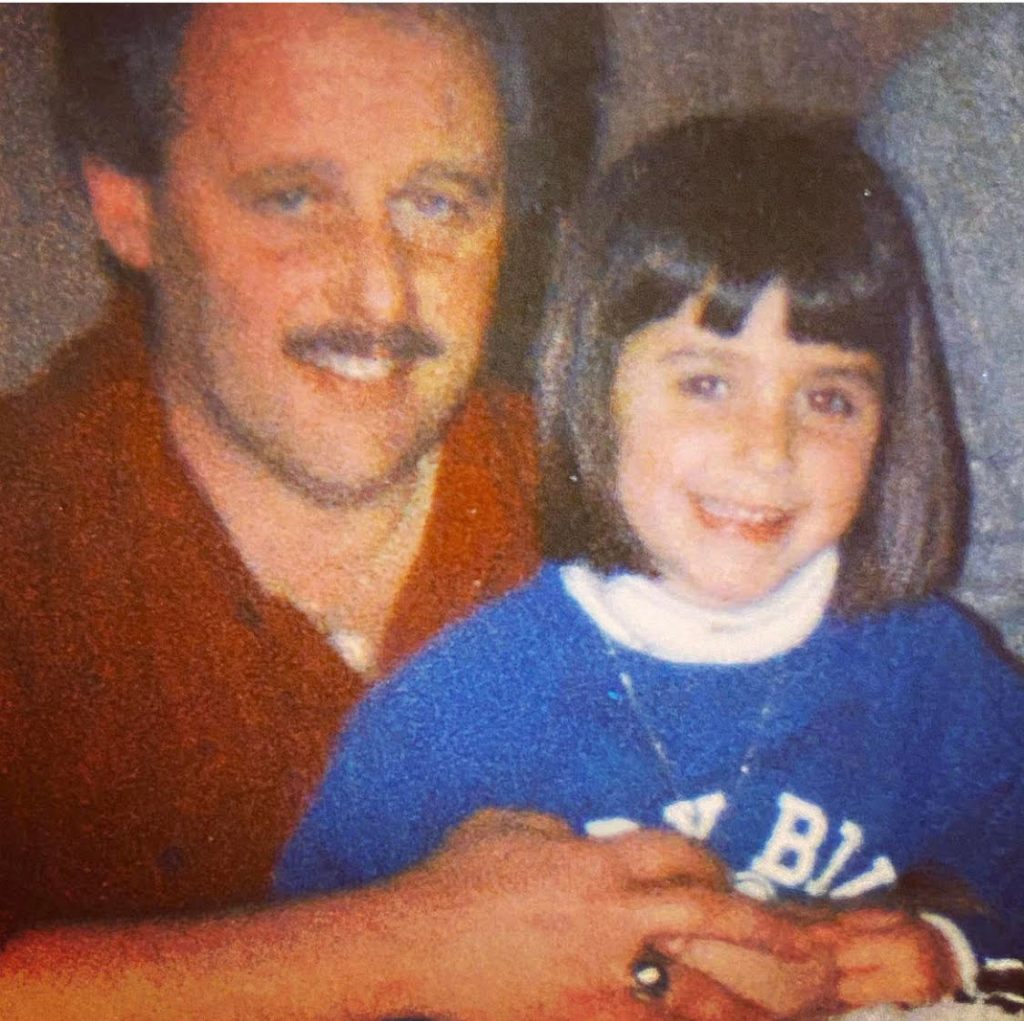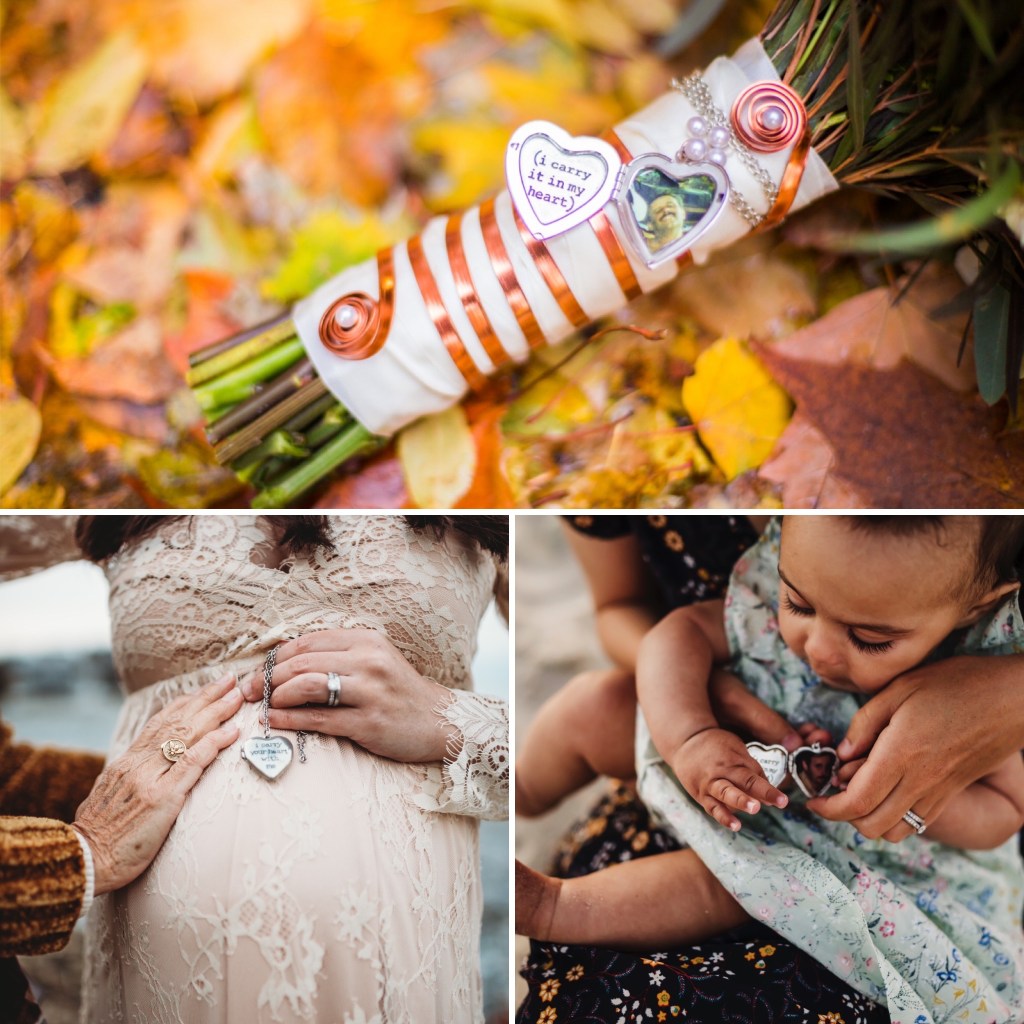Meet Amanda Davis

Amanda Davis is a teacher, artist, writer, and innovator. After losing her father at a young age, Amanda turned to art and writing as a way to cope and a way to tell her story. That experience inspired her to pursue to teaching, which in turn enabled her to encourage and empower her students to tell their own stories. She is the author of the award-winning 30,000 Stitches: The Inspiring Story of the National 9/11 Flag, and the recipient of the Ann Whitford Paul—Writer’s Digest Most Promising Picture Book Manuscript Grant. Amanda was also named Massachusetts Secondary Art Educator of the Year. She is an active member of SCBWI, 12×12, The Writer’s Loft, and National Art Education Association. When she’s not busy creating, you can find Amanda sipping tea, petting dogs, and exploring the natural wonders of the Bay State. Amanda lives in the Boston area with her family and rescue pup, Cora.
1. Moonlight Memories focuses on a little girl who is able to find memories of her mom in the stars. Has this concept of finding memories in moments of everyday life extended into your adult life? How does that look different now?
This is a great question! I think as we get older, life gets busier, and savoring these moments and memories can be more difficult. It takes effort and intention. As a part of my daily routine, I write in a gratitude journal. Giving thanks for all the wonderful moments and memories I experience throughout my day. I usually do this in the morning and at night. Before we go to bed, my partner and I also share a happy memory from the day. Each of these activities gives me time to reflect on the moments and memories that bring me joy. Capturing them in my journal gives me a space where I can transport back to those memories and smile.
In Moonlight Memories, Piper is remembering moments with her Mama, who passed away. As an adult, I continue to find ways to remember my father who passed away when I was young. Along with using art and writing to carry my father’s memory with me, I also carry a special locket with his picture. It has the line, “I carry your heart with me. I carry it in my heart,” which was taken from the E.E. Cummings poem, I Carry Your Heart With Me. The locket is something tangible. It makes me feel like my dad is right here with me. I’ve had it with me at each of my life’s big moments thus far. It was on the bouquet at my wedding so he could walk me down the aisle (along with my mom). The locket was with me during my pregnancy in the hospital while I was giving birth (not pictured, haa)! Once my daughter was born, we took the locket on a special photoshoot. She got to hold it in one of the pictures. Her Grampy is always with her, too. I’m grateful that I’ve found ways to remember my father that bring me comfort as I continue to live this life without him.
2. Grief can be an incredibly difficult and confusing emotion, especially for children. How does your book tackle grief in an accessible way?
Moonlight Memories has spare, lyrical text and explores something tangible that children can use to help process their grief- capturing memories through art making. Just like the main character Piper, children can also look to the sky and envision the memories of their loved one twinkling above them. In the story, we also see that Dad is struggling with Mama’s loss, too. I hope the book can act as an entry point for both child and caregiver to open-up discussions around the topic, to ask questions, and to process their grief together. Books can be a great way to make essential topics such as grief and loss more accessible to all.
3. In your book, art is used as a creative outlet to process grief. What other outlets can be used as a way to heal?
Yes! For me, art and writing was (and still is) a place of comfort and healing. For Piper, it is her way of remembering her Mama and recognizing she’ll carry those memories with her always as she captures them through her art. Art and writing might not be the right tool for all though. Other outlets to help process could include listening to music, dancing, taking walks in nature, journaling, spending time with a favorite pet or human friend, looking at photos of their loved one, telling stories of them, or building a scrapbook or altar in their memory.
4. Do you have any advice or resources for parents or guardians who are close to a child that might be experiencing grief?. In your book, art is used as a creative outlet to process grief. What other outlets can be used as a way to heal?
Don’t be afraid to talk to your child about what they are experiencing. When my dad passed away, no one really talked about it. I can remember equating this silence to not caring. Ask them questions and listen. Encourage them to find their own outlets to process and heal. Offer them tools to experiment with like a sketchpad, journal, or coloring book. Connect them with mental health professionals who can help expand on the discussions you’re having at home and practice coping skills. And, equally as important, seek support for yourself. Pay attention to your own grief. Letting your child know that you’re sad gives them permission to express their sadness too. Healing is not linear. It will be an up and down journey. Having the support you need for yourself and your family can make a world of difference in the long-term.
In regards to resources, I’d check out empowerHER. They’re a non-profit that works to pair children who’ve lost parents with adults who lost parents when they were young. They offer mentoring that I wish I had when I was young. I’ve been doing some volunteering with them. They recently expanded their mentoring program to include all parent loss, not just mothers with daughters, so I hope to become a mentor to children who have lost their fathers someday soon. HealGrief is another great resource. Moonlight Memories was recently featured on their podcast Let’s Talk Death: Conversations to Inform and Inspire. There are several other resources in the back matter of Moonlight Memories along with additional activities children can use to process their grief.
5. How can children connect with and encourage other children who are processing difficult emotions?
Talking to one another, sharing their favorite books about those topics, and being there to listen. Something as simple as “How are you doing?” or “I’m here to listen” can go a long way for a friend who is processing BIG emotions. These actions will let your friend know you care and are there to support them. Also, helping them keep to their usual routines and being a bright spot for them during this difficult time.
6. Moonlight Memories is especially close to you as it mirrors your own personal story. Would you be willing to share how your story impacted the creation of this book?
Moonlight Memories tells the story of a young girl who is dealing with the loss of a parent and finds comfort and healing through creativity. This story holds a special place in my heart as it was inspired by my own personal experience with loss. I lost my father at a young age. After his death, I was unsure of how to cope with the unexpected loss.
It wasn’t until I found art and writing that I was able to fully process the thoughts and emotions surrounding his death. I found my outlet. I found my voice. I soon realized that my father would always live on through the memories I was creating with my words and visuals. This experience is what led me to want to be an art educator, and later, a children’s book creator. I wanted to help others see the power of the arts. I wanted them to recognize it as a tool to learn more about themselves, others, the world around them, and a way to tell their story.
7. What do you hope young readers will take away from your book?
When my dad died, I think books like Moonlight Memories could’ve helped me process my emotions and start important discussions around the topic. Unfortunately, I wasn’t given any books on the topic and don’t remember talking about my feelings very much. I wrote this story so that others who’ve experienced loss will be encouraged to find their own outlets for comfort and healing. Hopefully, they will reach out for support and talk about it. I want them to know that someone cares. They are not alone and will carry the memories of their loved ones with them always.
8. Where can people find you and your work?
My website: www.amandadavisart.com
Follow me on social media: Twitter: @amandadavisart, Instagram: @amandadavis_art, Facebook: Amanda Davis Art & Writing and Linkedin: Amanda Davis

Amanda with her Dad (photo credit: Amanda Davis)

Locket with Amanda’s Dad’s picture (photo credit: Amanda Davis)